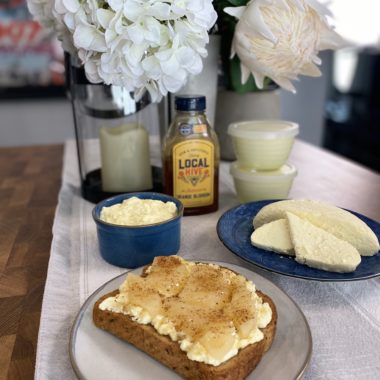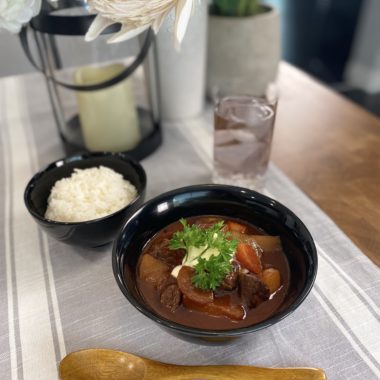Details
1
15 minutes
15 minutes
Imported recipes adapted for local palates happen all around the world. Here in the US, we regularly adapt foreign dishes to our taste, or immigrants have adapted traditional flavors to meet the preferences of their new home’s locals. Fettuccini Alfredo is a good example; so is Tex-Mex.
Chinese food has definitely gotten a very American treatment, both in ingredients (availability) and flavor (palate adjustment), but the West isn’t the only place that adapts recipes – Japan does too.
Tenshin Don (served in a donburi, or bowl) is a light, open-faced crab omelette served over rice, with a translucent, soy-sauce-based savory gravy.
Instead of using real crab, the Japanese version uses imitation crab / crab stick (Kanikama). Kanikama (kani-kamaboko, aka “crab fishcake”) was invented in Japan in 1974, and it’s a beloved item for dishes from cold cucumber sunomono salad to warm dishes like tenshin don. As a result, this dish is also known affectionately as Kani Tama (a shortened version of “Kanikama Tamago Donburi”, aka “Imitation Crab and Egg Bowl”). It’s also called Tenshin Han, which just replaces Don (“bowl”) with Han (“rice”). Three names for the same dish seems like overkill, but they’re all the same dish.
If you would like to elevate this dish and make a “luxury” tenshin don, try making this with real crab. Two notes, though: since real crab isn’t as sweet as imitation crab, you may have to adjust the flavors in the gravy. Also, real crab holds more water, so make sure you pat everything dry before using, or you’ll end up with a watery omelette, which obviously isn’t ideal.
My recipe uses a green onion and ginger flavored rice at the base of the bowl, but this is optional. Many Japanese Chinese restaurants will serve this over plain, steamed, short-grain Japanese rice. Other than the rice cooker, this is a one-pan dish, so it’s super simple to put together – I hope you try your hand at making this!
For other rice-based dishes, check out my Mushroom Risotto, Vegan Unagi Bowl, and Teriyaki Beef recipes!

Ingredients
Rice
- 1 serving cooked white short-grain rice
- 1 tbsp vegetable oil
- 1/2 tbsp minced green onion
- 1/2 tbsp grated ginger
Egg
- 1/2 tbsp vegetable oil
- 1/2 tbsp sesame oil
- 1/4 cup bean sprouts
- 1/4 cup bamboo shoots
- 2 whole eggs
- 2 – 3 imitation crab sticks, shredded
Sauce / Gravy
- 100 ml (3oz) water
- 1/2 tsp torigara powder
- 1/2 tsp sake (does not have to be the expensive stuff)
- 1/2 tsp soy sauce
- 1 tsp oyster sauce
- 1/2 tsp sugar
- 1/2 tsp sesame oil
- 1/2 tsp vinegar
- 1 tbsp katakuriko potato starch
- 1 tbsp water (for katakuriko)
Garnish
- 3 – 5 green peas
Directions
In a frying pan, combine vegetable oil, green onions, ginger, and rice and saute over medium heat until combined. Transfer to a small bowl, and flip rice over into a larger bowl.
In a bowl, whisk eggs and add shredded imitation crab.
In the now-empty frying pan, combine vegetable oil, sesame oil, bamboo shoots, and bean sprouts. Spread out evenly on bottom of pan, then pour egg and crab mixture over the vegetables. Over medium-low heat, cook until egg is partially set (like a medium-cooked egg). Do not flip omelette.
Slide omelette over rice.
In the now-empty frying pan, add the water, torigara powder, sake, soy sauce, oyster sauce, and sugar. Combine over medium-low heat until sugar is melted.
Add sesame oil and vinegar, and stir to combine.
In a small bowl, combine katakuriko and water to create a slurry.
Add slurry to frying pan in small doses – start with half, then add a small amount at a time, until the gravy gets to the consistency you prefer.
Pour gravy over omelette, garnish with a few sweet green peas, and serve.


